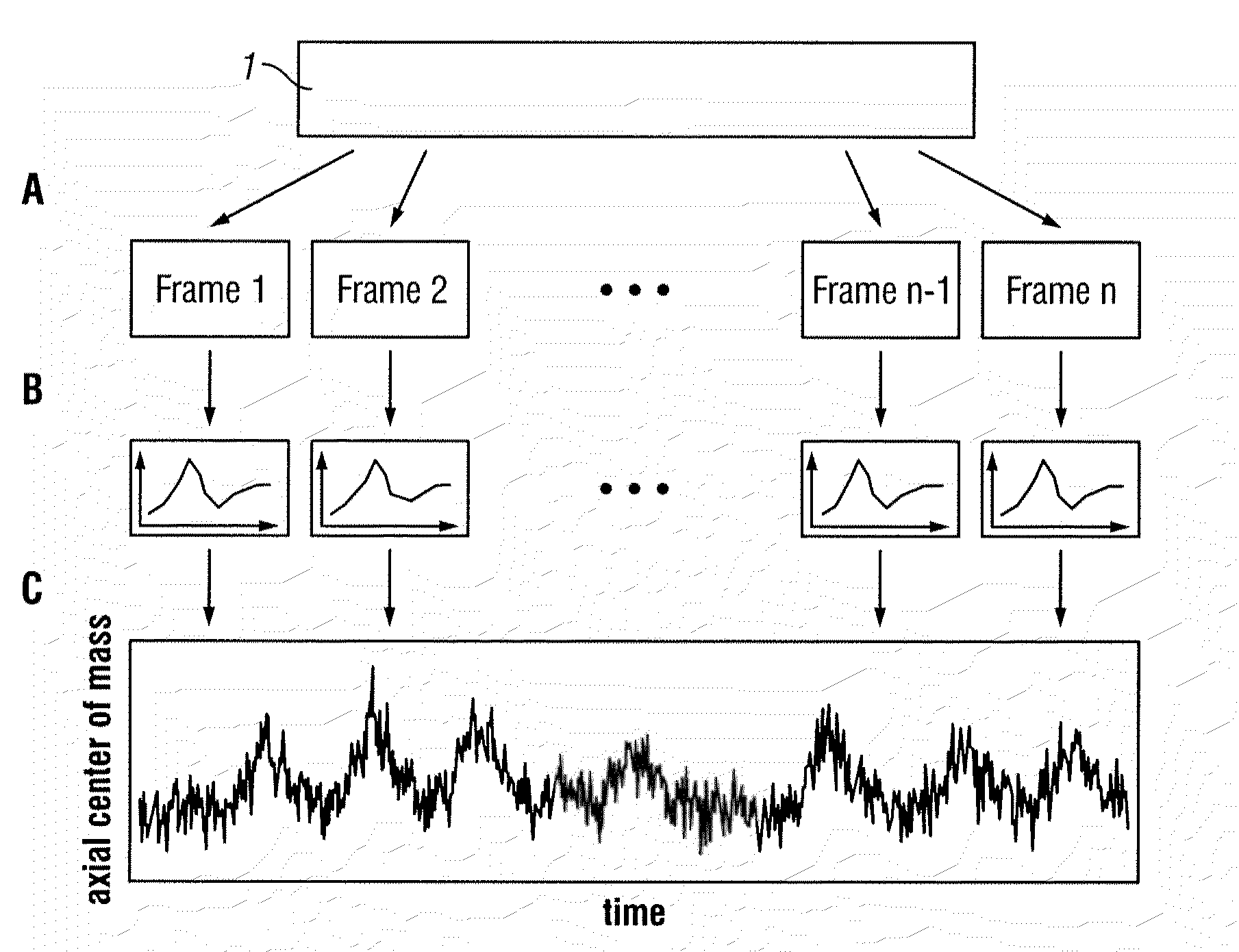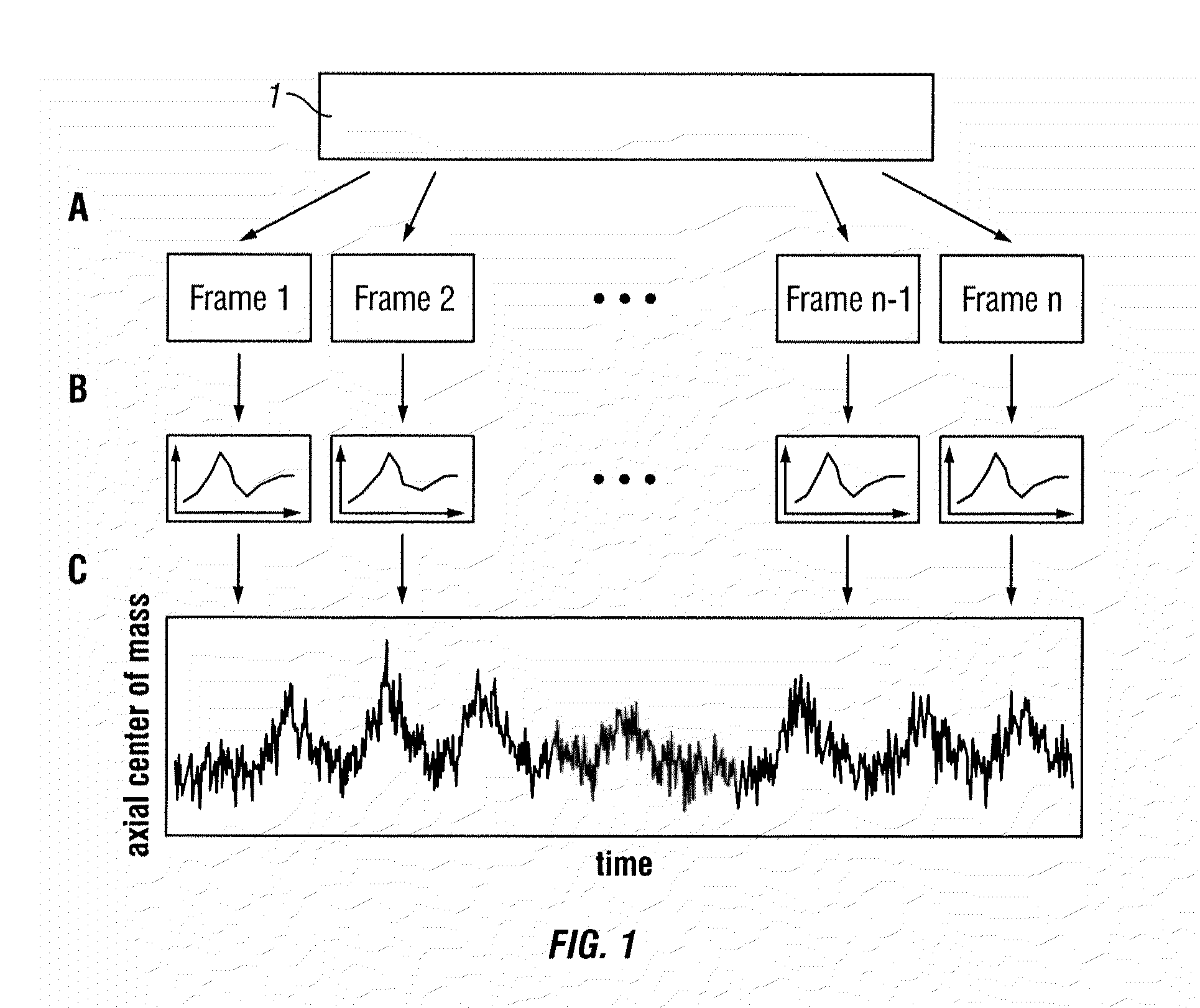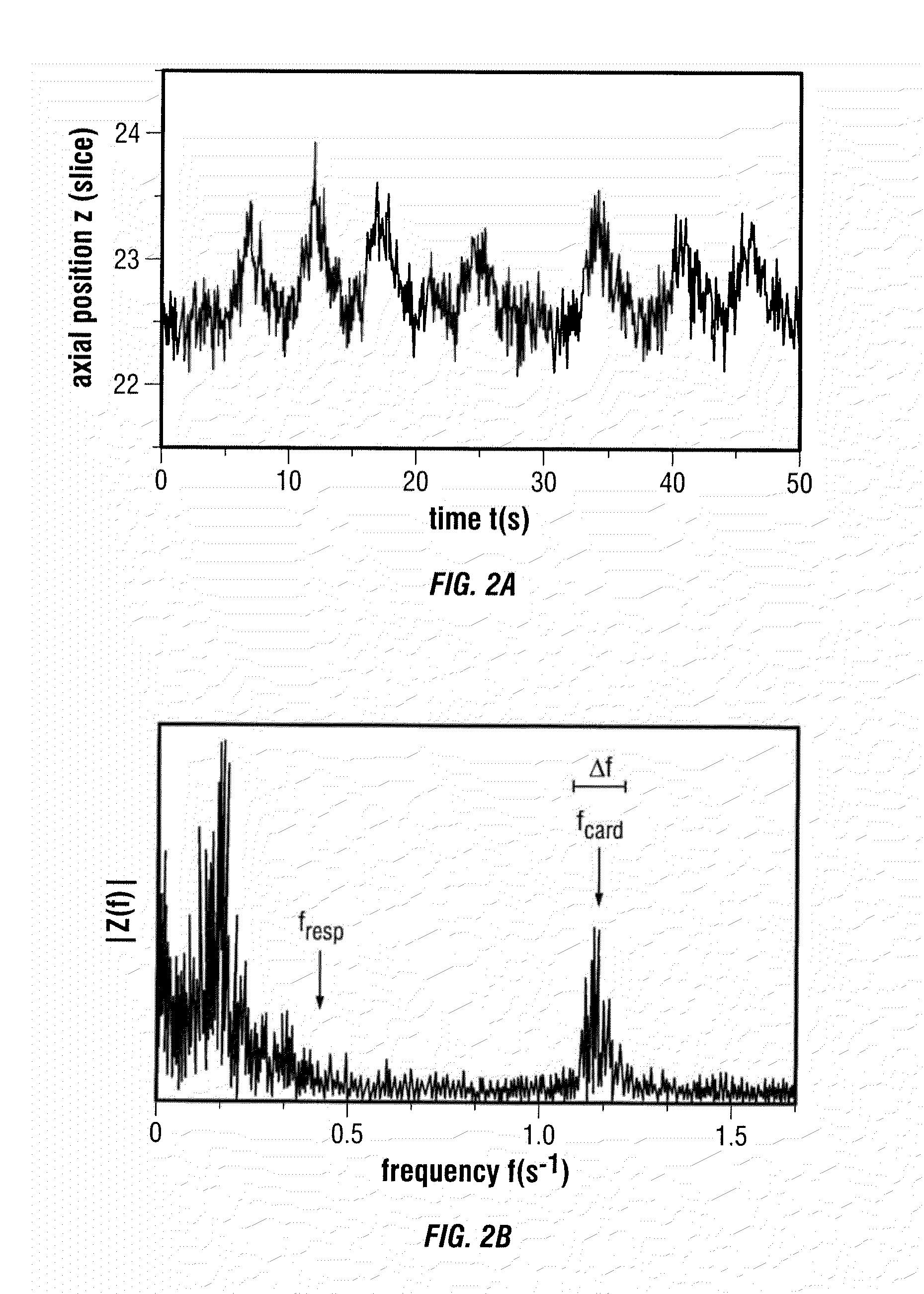List Mode-Based Respiratory and Cardiac Gating in Positron Emission Tomography
a positron emission tomography and respiratory and cardiac gating technology, applied in tomography, instruments, applications, etc., can solve the problems of reducing image resolution, cardiac pet/ct faces further difficulties, and not all generated gamma photons can be detected
- Summary
- Abstract
- Description
- Claims
- Application Information
AI Technical Summary
Problems solved by technology
Method used
Image
Examples
Embodiment Construction
[0028]The present invention is based on extracting internal organ motion from PET coincidence data. The embodiments of the present invention described hereinafter require using a PET scanner with list mode capability.
[0029]According to a preferred embodiment of the present invention, the case where heart contraction is connected to an axial motion shift and a heart beat peak is visible in the spectrum is described. The axial center of mass is then plotted as a function of time. Using a Fourier transform, the data is transformed into the frequency domain making it possible to identify and in turn isolate the respiratory and cardiac part of the spectrum respectively. Using an inverse Fourier transform, respiratory and cardiac curves can be computed with which a gating sequence can then be established.
[0030]According to another embodiment of the present invention, the case where heart contraction is not connected to an axial motion shift and no heart beat peak is visible in the spectru...
PUM
 Login to View More
Login to View More Abstract
Description
Claims
Application Information
 Login to View More
Login to View More - R&D
- Intellectual Property
- Life Sciences
- Materials
- Tech Scout
- Unparalleled Data Quality
- Higher Quality Content
- 60% Fewer Hallucinations
Browse by: Latest US Patents, China's latest patents, Technical Efficacy Thesaurus, Application Domain, Technology Topic, Popular Technical Reports.
© 2025 PatSnap. All rights reserved.Legal|Privacy policy|Modern Slavery Act Transparency Statement|Sitemap|About US| Contact US: help@patsnap.com



